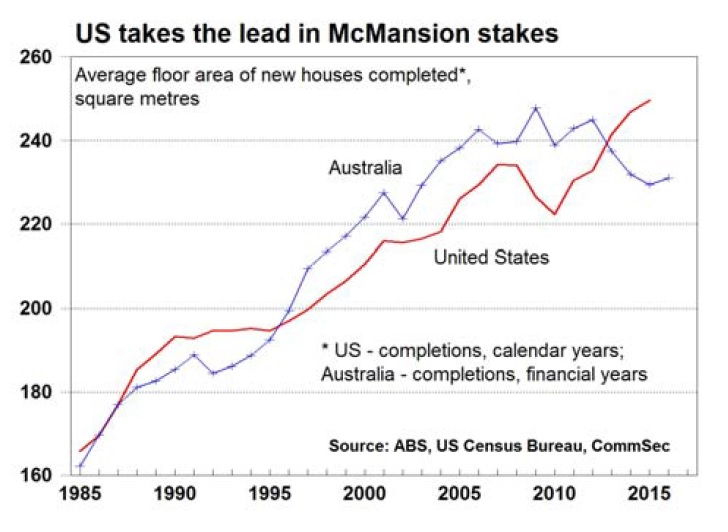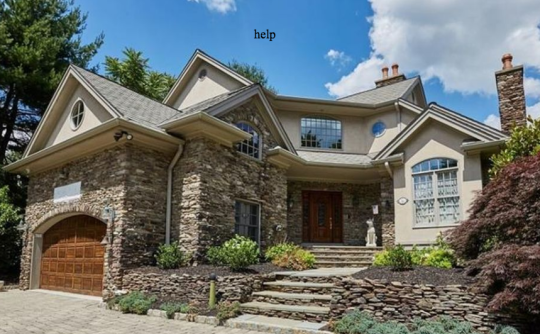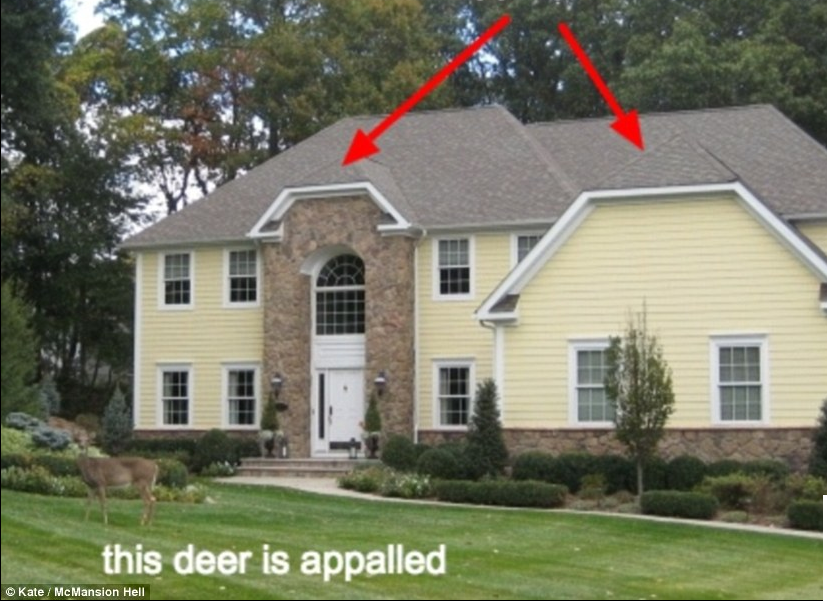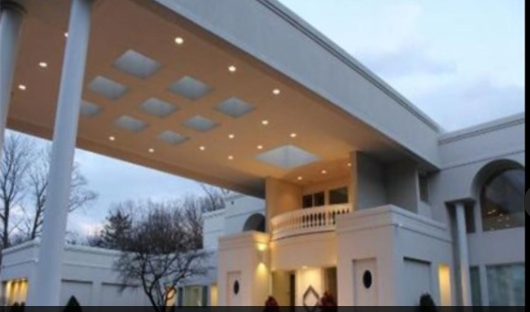NORMAL -- Simply a Setting on the Washing Machine
Being a former math teacher, I often choose to categorize things by picturing a normal distribution curve in my mind. For example, if you look below, “most” everything falls in the middle -- that’s considered the ‘normal’ area -- with very few at the far left or far right (and, no, this is not a political statement of ANY kind). For example, if you meet a professional athlete, that person’s “athletic abilities” might be thought of as being in the far right, whereas mine would be much further left (like, to the left of that one stick figure all by itself below).

In terms of houses, then, let’s categorize single family dwellings and their purchase. Per Zillow through 3/31/17,
“The median home value in the United States is $196,500.”
That number does not reflect a preponderance of “tiny homes” (more on that coming soon!) -- those that might be on the far left on the curve above. Nor does it seem to indicate people are buying mansions by the droves, or the few on the very far right. My guess is that most mansions are inherited, not purchased, although the Christie’s site proves that some certainly are bought and sold.
Let’s focus on the almost-far-right outlier -- the very fun McMansions! (Keep the jeers and insults to a minimum!) Here’s a surprise for you -- they’re bbbaaaacccckkk! Yes indeed, McMansions are once again being built and purchased! Don’t believe me? Keep reading.
Just last year, the cheatsheat.com queried, “Have Americans Already Changed Their Minds on Buying Big Homes?” and subsequently went on to respond with a resounding “Maybe.”
“The majority of Americans are not living in a home that is the size they want. According to a new analysis from Trulia, only 40% of respondents say they are living in a home that’s their ideal size, while 43% believe their dream home is somewhat or much larger than their current residence. Only 16% say their ideal home is smaller than their existing home.
- And -
Baby boomers might have an empty nest and be nearing retirement, but more would still prefer to live in a larger home than a smaller one, represented by a slim five-percentage-point difference. Millennials clearly want a larger home, with 60% saying their ideal residence is larger than where they live now …”
A few months ago, Investopedia published, “5 Reasons Retirees Are Upsizing Instead of Downsizing Their Homes”. Essentially, their rationale is:
They may want to live near their adult children and have space for grandchildren and holiday gatherings.
Larger, newer homes more easily accommodate caring for elderly parents and provide space for under or unemployed adult children.
Bigger homes are often near amenities seniors desire.
Many wealthy retirees can simply afford the bigger, nicer homes and feel rewarded when they purchase and live in one.
These homes may be better suited to elderly needs in terms of providing wider hallways, outdoor services, one floor living, elevators, etc.
In addition to retirees, you may be surprised at the younger people who are delving into McMansion living. For example, [Washington] DCUrbanMom.com posted this late 2016 entry:
|
09/02/2016 09:54 Subject: Millennials aren't going to buy your ugly mcmansions, silly Boomers!
| |
|
Anonymous
|
Gen Xer here with two middle school kids in McLean VA. My wife and I knocked down our tiny 1960s split level (worth $~750K) and built a new home (now worth ~$1.6 million). The neighborhood we live in has a mix of tear downs and older homes. It's a large home, but we still have a nice backyard and added many upgrades that weren't cheap although I think the haters would still call it a McMansion. However, I don't understand the desire for the alternative. Here's what I mean:
Our old home had a brick exterior, no house wrap, tiny windows, squeaky floors, no drain tile so the basement leaked, no basement vapor barrier so radon was leaking up, and no character. The original kitchen contained asbestos tiles (which was covered up). The energy efficiency of the house was terrible. Why is what I described better than a new home? Sure, we decided to use HardiPlank vs. brick on the outside but that’s a personal design preference but everything else in the new place is superior to the old one. I hear comments from people that our old home used plywood and solid wood beams but the new home uses Advantech OSB and beams. Well, science tells us that the products are structurally equivalent and OSB is stronger in shear values. The new home has a radon system, better drainage, large windows so we don’t need to use as much electricity, sensors that shut off lights to save energy, and is air tight. The floor doesn’t squeak and is less likely to in the long run, our fire alarm is integrated into home security system which makes it a much safer home (e.g., the air conditioner shuts off if a fire is detected). And yes, we now use our gourmet kitchen to cook most of our meals because it’s just much easier and fun (our old kitchen was tiny and it sucked to cook in)! Why is our ‘McMansion’ worse than our old home? |
That raises some good points to consider for sure. But back to retirees, The Motley Fool points out,
“A final reason that motivates many retirees who upsize is that they just want a fancier, more prestigious home.”
This mini trend towards upsizing is also apparently not unique to the US. For example, in February of this year, Australia’s realestate.com published, “5 questions to ask before upsizing your home.” And the United Kingdom’s Avant Homes offered, “A Guide to Upsizing Your Home.” And, earlier this year, Canada’s Eventbrite offered an informative event on upsizing your home.
But at least as of November of last year, it appears the good ole USA was still winning the revived McMansion war. Per BusinessInsiderAustralia,
“Australia is no longer building the largest houses in the world, according to new research from Commsec – losing a title it’s held for two decades.
According to the study, using data supplied by the ABS, the average floor area of a newly-built detached Australian home stood at 231 square metres last financial year. In comparison, based data from the US Census Bureau, the average size of a detached American house built last year grew to 249.6 square metres – the largest size on record.”

Now let’s have some fun. Assume, if you will, that McMansions will again be springing up everywhere you don’t want them to be. Perhaps it will be helpful if you can serve as the resident local expert and advise these builders/buyers/renovators of a potential McMansion before widespread damage incurs. What a gift you’ll be offering! And, yes, of course we’re going to help you, right here and right now.
McMansionHell.com just published its summer schedule. Consider this site your daily “go-to” as the anti McMansion authority.
The summer post schedule will be as follows:
Monday - informative, semi-serious posts about architecture, history, and theory.
Thursday - Weekly house roasts. I moved this to Thursday to give myself more time to write them than just a single day. Monday & Wednesday are just too close together.
Here is just a small part of a posting from last year on that site that will assist your friends or neighbors who claim to be buying/building/renovating a mansion to see that they are dealing, instead, with a McMansion:
Mansion or McMansion: What Distinguishes the Two?
The distinctions between a Mansion and a McMansion can be divided into three categories:
1.) Age
2.) Craftsmanship (e.g. being designed for the space of the lot, the quality of the building materials)
3.) Architectural and Stylistic Integrity (how well historical design styles are integrated or reproduced, attention to detail and principles of design)
But if you’re still not clear, not to worry. The author gives plenty of (often hysterical) examples, like this one. The added “help” makes it clearly a McMansion.

There are many other sites you can use to enhance your McMansion Education. The DailyMail.com provided some very funny (to me) “Crimes Against Architecture”. You can use these as “demonstrations” to those with an applicable lack of knowledge. Here’s one of my favorites, copied from the aforementioned McMansion Hell!

Perhaps, however, your “targets” want a source with a bigger, better brand, a more recognizable name, a less offensive web handle. Then turn to Forbes and their slide show, “America’s Ugly Mansions”. That’s definitely worth a click; here’s the first house shown:


Aside from those built by the owners of tacky taste, why have McMansions gotten and maintained such a bad name? According to Patrick Clark in Bloomberg.com, the bad name is because they are a bad investment.
“Real estate agents don’t usually tag their listings #McMansion, so to compile the data, Trulia created a proxy, measuring the price appreciation of homes built from 2001 and 2007 that have 3,000 to 5,000 square feet. While there’s no single size designation, and plenty of McMansions were built outside that time window, those specifications capture homes built at the height of the trend.
McMansions cost more to build than your average starter ranch home does, and they will sell for more. But the return on investment has dropped like a stone. The additional cash that buyers should be willing to part with to get a McMansion fell in 85 of the 100 largest U.S. metropolitan areas.”
Well, dang. But here’s the thing -- I own a McMansion! Oh no! Should I be embarrassed? Perhaps, but mostly I am grateful. I’ve had the house for 12 years and, in that time, I’ve hosted at least a dozen of my own business meetings; I held a mini two night family reunion for 12; and I’ve become reacquainted with some great old friends (and a few moochers, ha). I finally had the room to host for long visits. It’s been worth every penny. (Well, except for the moochers maybe).
I for one am thrilled that McMansions are “back!" Next time, instead of one giant house, I’m thinking of building several tiny homes on one lot. The possibilities are endless!






















